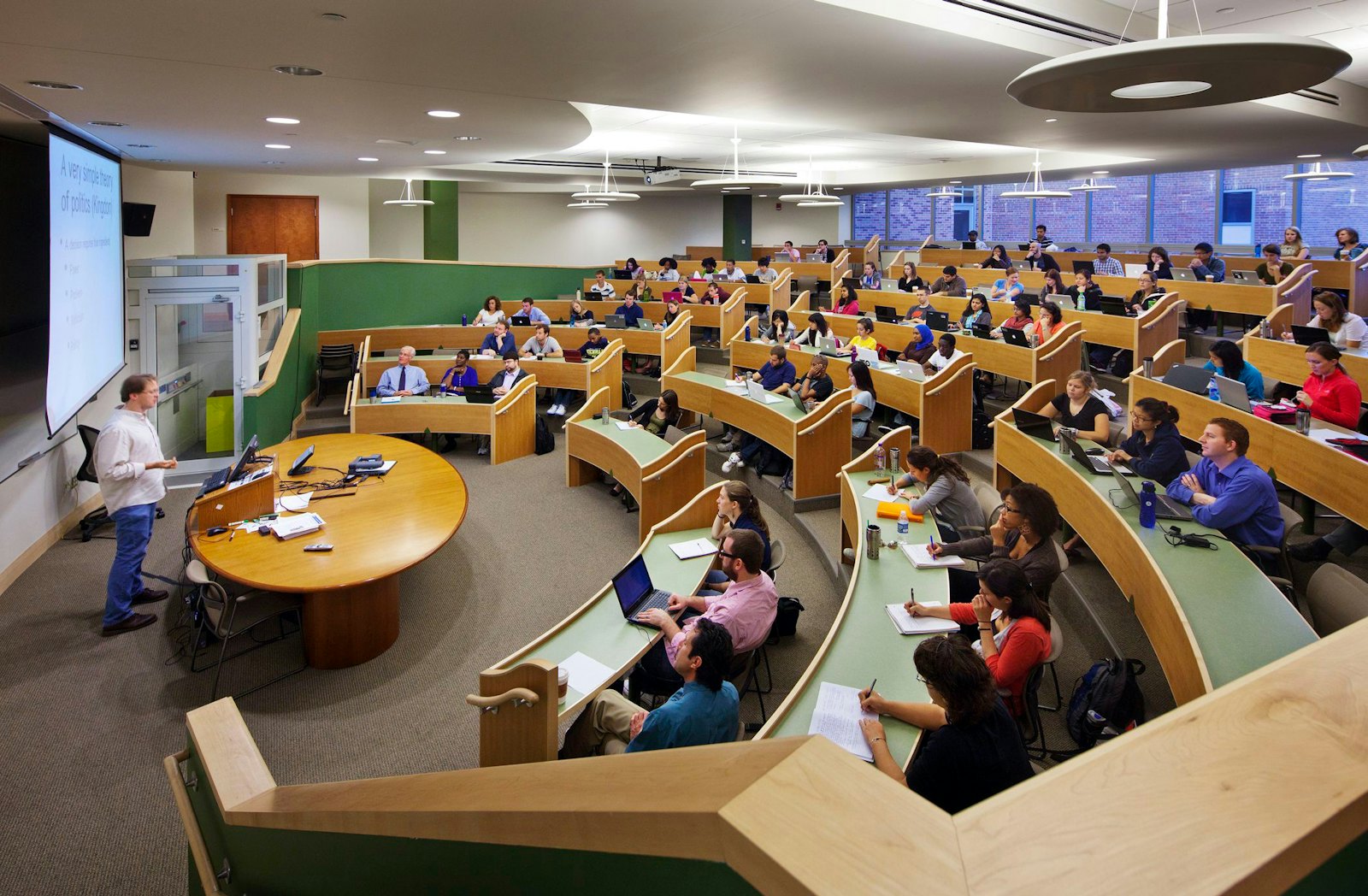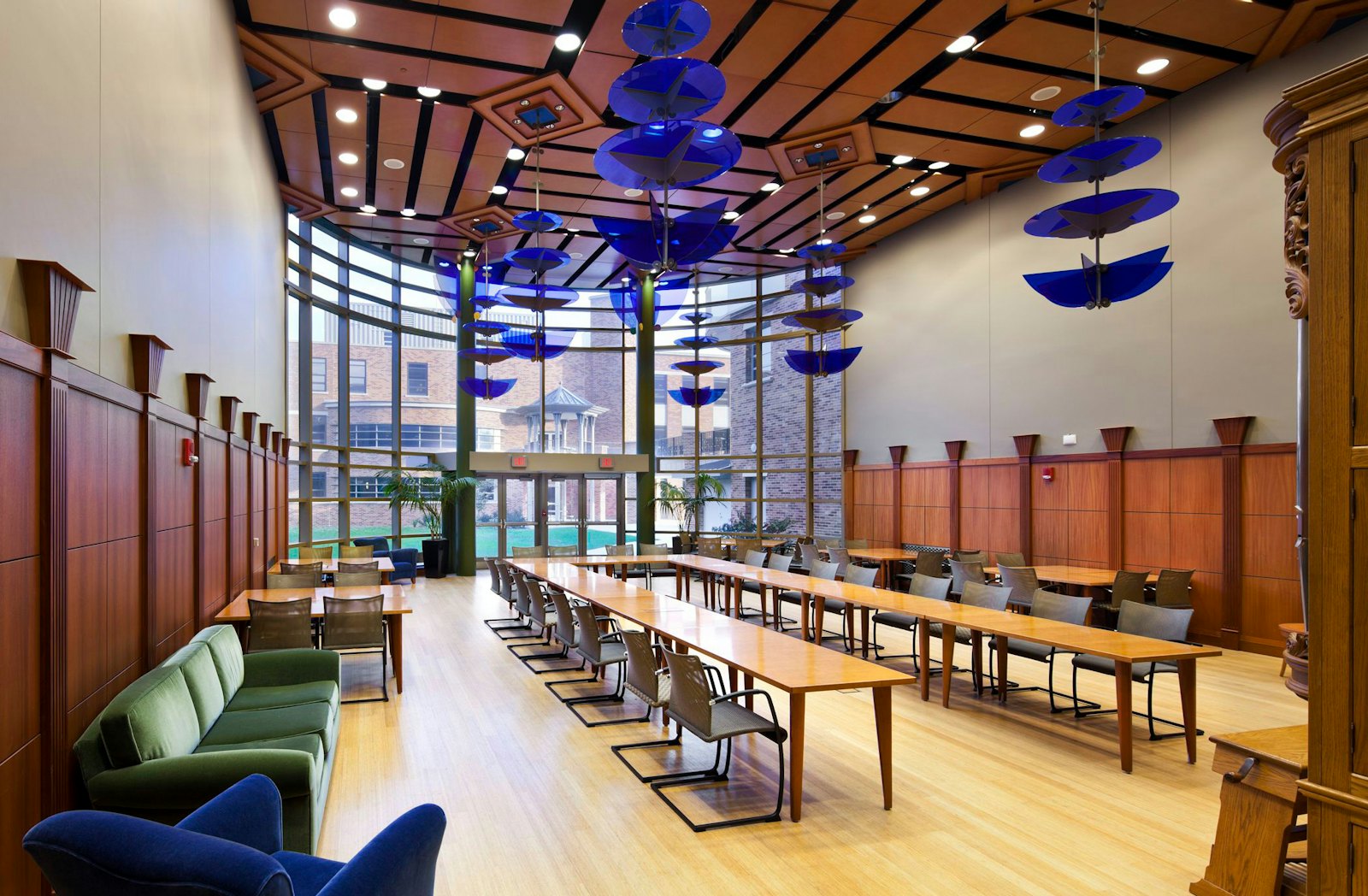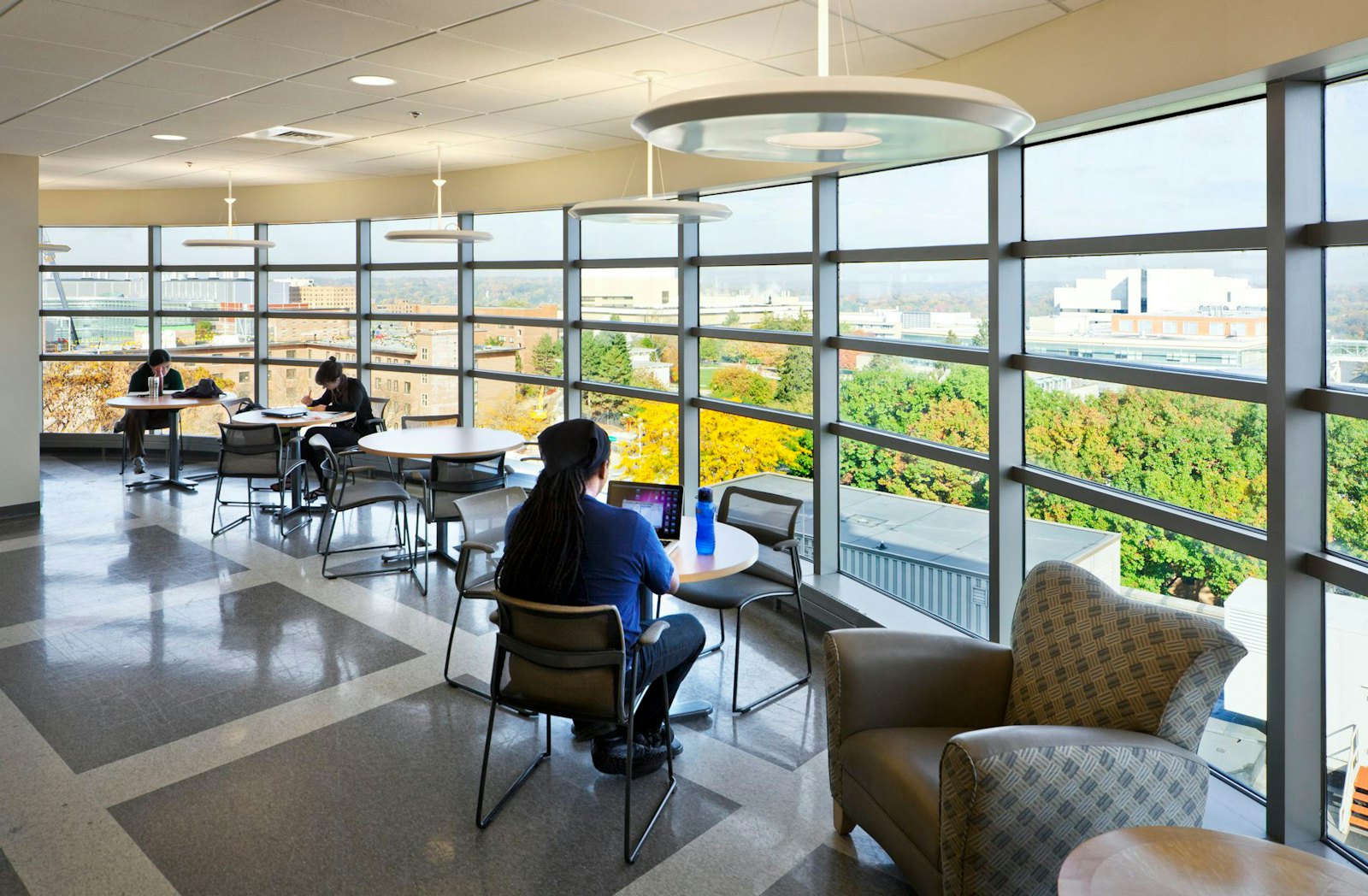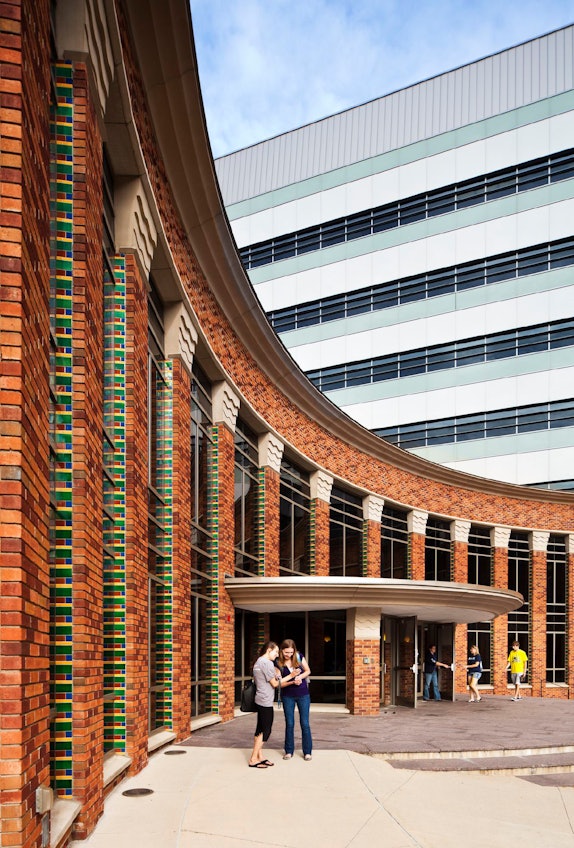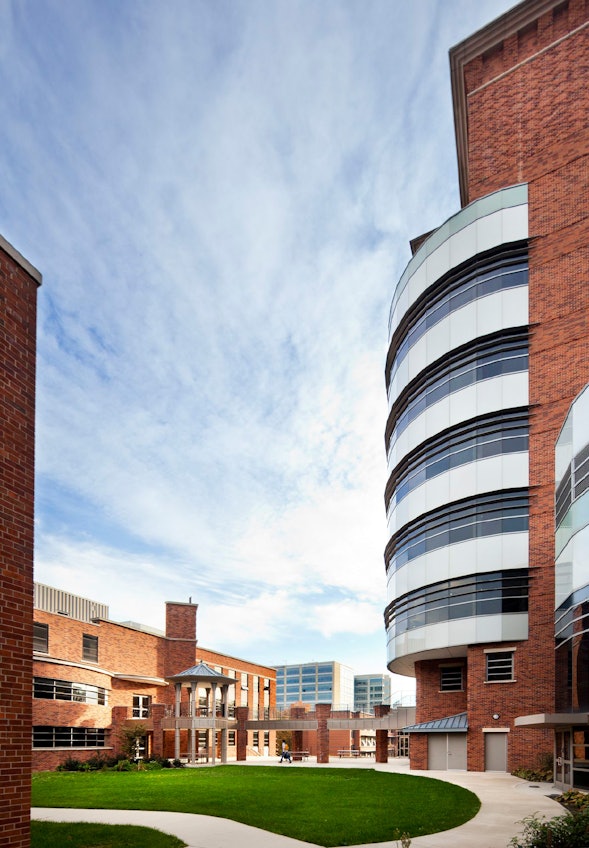School of Public Health
Established in 1941, the School of Public Health at the University of Michigan was housed in two aging buildings separated by a city street and tied together by a third floor pedestrian bridge. Centerbrook undertook a master plan which unified the school within a two-story Community Crossroads and designed an extensive renovation and addition to the school buildings.
The Crossroads fosters collaboration and offers shared teaching space to encourage new research opportunities. The 42,000-square-foot project is an open center housing a library, auditorium, cafeteria, student community services, and a solarium doubling as a conference center.
University of Michigan
The complex also included a new, 100,000-square-foot, five-story glass tower. The laboratory tower rises above the Crossroads, doubling the school's research capabilities. The tower provides modular laboratories, classrooms, interaction areas, and community-focused research space while providing an ephemeral backdrop reflecting the sky. 70,000 square feet of the original buildings were renovated for office and dry lab research space.
The labs themselves house environmental quality, toxicology, virology, and bacteriology research and extend the length of the building's east side. Smaller support labs are located along the corridor wall but accessed from the modules. These include hood alcoves, cold and warm rooms, tissue culture rooms, and equipment rooms. Noise and heat generating equipment are concentrated in the support labs, where they can be efficiently controlled. Shared equipment and preparation labs, interposed between offices for research staff, are located on the west side of the building.
Glass bays enclosing staff work stations enliven the corridor and offer views to the exterior. Benches and white boards along the corridor encourage casual interaction among researchers. Light-filled lounges at each floor, with views to the campus and arboretum beyond, are also used for seminars and departmental or lab social events.
Specialty labs are located on the top floor, including a Biosafety Level 3 installation and two trace-metal analysis clean rooms. Also located on the top floor is a new vivarium, intended to support and augment an aging facility adjacent to it in the existing building.

Before

After
MORE INFORMATION
We're using cookies to deliver you the best user experience. Learn More


